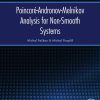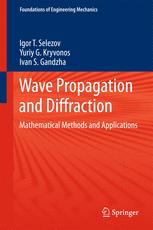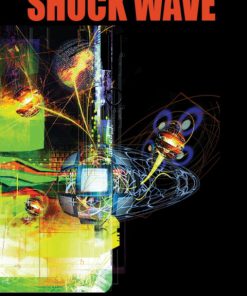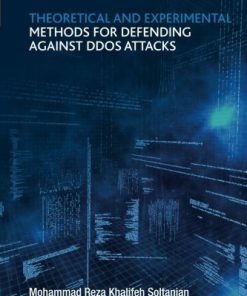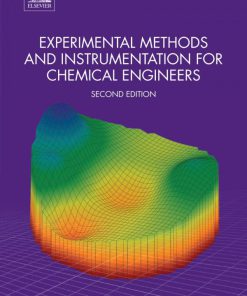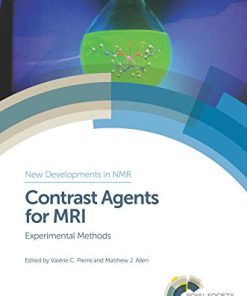Experimental Methods of Shock Wave Research 1st Edition by Ozer 3319237454 9783319237459
$50.00 Original price was: $50.00.$25.00Current price is: $25.00.
Experimental Methods of Shock Wave Research 1st Edition by Ozer Igra – Ebook Instant Download/Delivery ISBN(s): 3319237454, 9783319237459
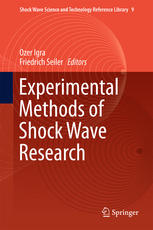
Product details:
- ISBN 10: 3319237454
- ISBN 13: 9783319237459
- Author: Ozer Igra
This comprehensive and carefully edited volume presents a variety of experimental methods used in Shock Waves research. In 14 self contained chapters this 9th volume of the “Shock Wave Science and Technology Reference Library” presents the experimental methods used in Shock Tubes, Shock Tunnels and Expansion Tubes facilities. Also described is their set-up and operation. The uses of an arc heated wind tunnel and a gun tunnel are also contained in this volume. Whenever possible, in addition to the technical description some typical scientific results obtained using such facilities are described. Additionally, this authoritative book includes techniques for measuring physical properties of blast waves and laser generated shock waves. Information about active shock wave laboratories at different locations around the world that are not described in the chapters herein is given in the Appendix, making this book useful for every researcher involved in shock/blast wave phenomena.
Table of contents:
Part I Shock Wave Generation in Gases
1 Shock Tubes
1 Introduction
2 Shock Tube Flow
2.1 Flow Relations Across the Shock Front
2.2 Flow Relations Across the Contact Surface
2.3 Flow Relations Across the Rarefaction Wave
3 Review of Different Shock Tubes
3.1 UTIAS Hypervelocity Shock Tube, Canada
3.2 Refurbishing the UTIAS Hypervelocity Shock Tube
3.3 The Shock Tube in the Prefectural University, Toyama, Japan
3.4 The Shock Tube at the Ben Gurion University, Beer Sheva, Israel
3.5 The Shock Tube Laboratory of the Ernst Mach Institute, Freiburg, Germany
3.6 Shock Tubes at the Aix-Marseille University, France
3.6.1 IUSTI Initial Conditions Controlled Shock Tube
3.6.2 IUSTI Variable Inclination Shock Tube
3.6.3 IUSTI High Mach Number Shock Tube
3.6.4 Blast Wave Generation in a Shock Tube
3.7 Shock Tubes at the Ioffe Physical-Technical Institute of Russian Academy of Sciences
4 Diagnostics
4.1 Pressure Measurements
4.2 Shadowgraph Visualization
4.3 Schlieren Visualization
4.4 Interferometry
4.5 Emission of Radiation Measurements
4.6 Absorption of Radiation Measurements
5 Shock Tunnels, a Brief Outlook
References
2 Measurement of the Physical Properties of Blast Waves
1 Introduction to Blast Waves
2 The Physical Properties of Blast Waves
2.1 Definitions of the Physical Properties
2.1.1 Hydrostatic Pressure
2.1.2 Density
2.1.3 Temperature
2.1.4 Particle Velocity
2.1.5 Dynamic Pressure
2.1.6 Reflected Pressure
2.1.7 Total Pressure
2.1.8 Loading Pressure
3 Measurement Techniques
3.1 Primary-Shock Velocity Analysis
3.2 Hydrostatic Pressure Gauges
3.3 Total (Stagnation) Pressure
3.4 Loading Pressure
3.5 Density
3.6 Temperature
3.7 Particle Velocity
3.8 Dynamic Pressure
3.9 Flow Visualization Techniques
3.9.1 Refractive Image Analysis
3.9.2 Particle Trajectory Analysis
3.9.3 Background Oriented Schlieren
3.10 Passive Methods
3.10.1 Cantilever Gauges
3.10.2 Estimating Blast Properties from Damage and Injury
3.11 Measurement Methods Using Numerical Simulation
4 Blast Wave Scaling Laws
5 Summary and Discussion
References
3 Shock Wave Experiments in a High-Temperature Gas Flow
1 Introduction
2 Arc-Heated Wind Tunnel and Arc Heater
3 Dark Space
4 Spectra from a Shock Layer
5 Spallation
6 Concluding Remarks
Acknowledgement
References
4 Laser Focusing
1 Background
2 Laser-Pulse-Induced Blast Wave
3 Application to Space Propulsion
4 Laser-Pulse-Induced Low-Density Bubble
References
Part II Shock Tunnels
5 The Aachen Shock Tunnel TH2 with Dual Driver Mode Operation
1 Introduction
2 Operation Principle of the Conventional Shock Tunnel
3 Setup of the Aachen Shock Tunnel TH2
3.1 Conventional Helium Driven Shock Tunnel
3.2 Detonation Driven Shock Tunnel
3.3 Shock Reflection and Driver Gas Contamination
3.4 Nozzle Reservoir and Free Stream Flow Conditions
3.5 Driver Gas Detection by the Free Stream Static Pressure
4 Summary
References
6 Shock Tunnels at ISL
1 Introduction
2 Hypersonic Shock-Tunnel Facilities
3 Measurement Techniques for High-Speed Flows
3.1 Basic Measurements for Flow Characterization
3.2 High-Speed Visualizations
3.3 Surface-Pressure Measurements
3.4 Heat-Flux Measurements
3.5 Laser Doppler Velocimetry (LDV)
3.6 Particle Image Velocimetry (PIV)
3.7 Pressure Sensitive Paints (PSP)
3.8 Free-Flight Force Measuring Technique (FFM)
4 Nozzle Design for Laval-Contoured Nozzles and Nozzle-Flow Qualification
4.1 Laval Contoured Nozzle Design
4.2 Nozzle-Flow Qualification
5 Most Recent Research Subjects
5.1 Missile Control by Side Jets
5.2 Aerodynamic Coefficients from Free-Flight Trajectory Measurements
5.3 Projectile Control by Plasma Discharge
5.4 Missile-Nose Heating
5.5 Atmospheric Dispersion of Droplets
6 Conclusion
Acknowledgments
References
7 Free Piston Shock Tunnels HEG, HIEST, T4 and T5
1 Introduction
2 Working Principle of Free Piston Driven Shock Tunnels
2.1 Reflected Shock Tunnel Operation
2.2 Techniques for Total Specific Enthalpy Augmentation in Reflected Shock Tunnels
2.3 Free Piston Driven Reflected Shock Tunnels
3 High Enthalpy Shock Tunnel Göttingen (HEG)
3.1 Selected Applications of HEG
3.1.1 High Enthalpy Cylinder Shock Layer Investigations
3.1.2 Free Jet Testing and Numerical Analysis of Scramjet Flow Paths
3.1.3 Laminar to Turbulent Hypersonic Boundary Layer Transition Characterization and Passive Control
4 JAXA High Enthalpy Shock Tunnel (HIEST)
4.1 Selected Applications of HIEST
4.1.1 Development of Force Measurement Technique and Investigation of Real-Gas Effect on Aerodynamic
4.1.2 Investigation of High-Enthalpy Heat Flux Augmentation
4.1.3 Investigation of Hypersonic Boundary Layer Transition
5 The University of Queensland Shock Tunnel T4
5.1 Selected Applications of T4
5.1.1 Measurement of Forces on Scramjets
5.1.2 Skin-Friction Reduction by Boundary Layer Combustion
6 California Institute of Technology Shock Tunnel T5
6.1 Selected Applications of T5
6.1.1 Enthalpy Effects on Hypervelocity Boundary Layer Transition and Passive Control of Transition
6.1.2 Influence of Non-equilibrium Dissociation on the Flow Produced by Shock Impingement on a Blunt
6.1.3 Gas Dynamical Detection of Driver Gas Contamination
References
8 Development of the New Piston-Driven Shock-Tunnel HELM
1 Introduction
2 Description of the Facility and Capabilities
2.1 Working Principle
2.2 Geometric Design and Capabilities
2.3 General Simulation Capabilities
3 Features of the Facility
3.1 Variable Tube Lengths
3.2 Optical Access at the End of the Shock Tube
3.3 Integration of Plasma-Windtunnel and Hot Model Technique
4 Present Status of Obtained Results
5 Summary
Acknowledgements
References
9 Development and Calibration of Detonation-Driven High-Enthalpy and Hypersonic Test Facilities
1 Introduction
2 Detonation-Driven High-Enthalpy Shock Tunnel JF10
2.1 Layout of the JF10 Shock Tunnels
2.2 Pressure Variations at the End of the Driven Section
2.3 Uniformity Test of Nozzle Flows
2.4 Incident Shock Wave Decay
2.5 Concluding Remarks
3 Detonation-Driven Hypervelocity Shock Tunnel JF12
3.1 Descriptions of the JF12 Shock Tunnel
3.2 New Techniques Developed for the JF12 Shock Tunnel
3.2.1 Backward-Running Detonation Driver
3.2.2 Tailored Interface Operation Condition
3.2.3 Gas Contamination from the Shock/Boundary Interaction
3.2.4 Wave-Reflection Damping in the Vacuum Tank
3.3 The Results of Performance Tests
3.4 Concluding Remarks
4 Detonation-Driven High-Enthalpy Expansion Tube JF16
4.1 Descriptions of JF16 Expansion Tube
4.2 Test Flow Evaluation
4.3 Other Parameters for Expansion Tubes
4.4 Test Duration from Flow Visualization
4.5 Concluding Remarks
5 Summary
Acknowledgments
References
10 Hypersonic Short-Duration Facilities for Aerodynamic Research at ITAM, Russia
1 Introduction
2 IT-301 Hotshot Wind Tunnel
3 IT-302 M Hotshot Wind Tunnel
4 Project of Upgrading the IT-302 M Hotshot Wind Tunnel
5 Transit-M Hypersonic Wind Tunnel
6 Upgrading of the Transit-M Wind Tunnel for Operation at M = 2
7 AT-303 Hypersonic Wind Tunnel with Adiabatic Compression
8 The Upgrading Project of the aT-303 Wind Tunnel
References
11 Shock Tunnels and Hypersonic Research in IISc, Bangalore
1 Historical Overview
2 Hypersonic Shock Tunnels and Diagnostics
2.1 HST-2
2.1.1 Measurement of Forces and Heat Transfer Rates on Hypersonic Blunt Bodies
2.1.2 Schlieren Visualizations of Shock Tunnel Flow Fields
2.1.3 Flow Field Investigations Over Spiked Bodies
2.1.4 Aerodynamic Control by Counter Flow Jet Injection and Upstream Energy Deposition
2.1.5 Hypersonic Intakes and Shock-Boundary Layer Interactions
2.2 HST-3
2.3 HST-4
2.4 HST-5
3 Summary
Acknowledgements
References
Part III Gun Tunnel
12 Gun Tunnels
1 Introduction
2 Arrangement and Operation
3 Early Stagnation Temperature Work
3.1 Calculation Methods
3.2 Measurement Techniques
4 Thin Film Gauge Temperature Probes
5 Computational Simulation
6 Fluctuations
7 Related Facilities
8 Conclusion
Acknowledgements
References
Part IVExpansion Tubes
13 Expansion Tubes in Australia
1 Introduction
2 Principle of Operation
3 Experience with the TQ and X1 Facilities
3.1 Test Flow Frequency Focusing
3.2 Operation with a Shock-Heated Secondary Driver
4 The X2 Facility
4.1 X2’s Free-Piston Drivers
4.2 X2 Mach 10 Nozzle
4.3 Test Flow Characterisation
4.3.1 Test Flow Measurements
4.3.2 Facility Numerical Simulation
5 The X3 Facility
6 Conclusion
Acknowledgments
References
14 Hypersonic Ludwieg Tube
1 Introduction
2 Ludwieg Tube Design
3 Tunnel Components
3.1 Storage Tube and Valve
3.2 Nozzle
3.3 Test Section and Diffusor
4 Instrumentation
4.1 Pressure Measurements
4.2 Schlieren
4.3 Heat Flux
5 Wind Tunnel Flow
5.1 Flow Start
5.2 Test Section Flow
5.3 Reference Model Testing
6 Experiments in Transitional Hypersonic Boundary Layers
People also search:
famous shock experiment
5 applications of shock waves
shock wave theory
types of shock waves
experimental methods in the physical sciences
You may also like…
Uncategorized
Uncategorized
Exhibitions as Research Experimental Methods in Museums 1st Edition Peter Bjerregaard (Editor)
Uncategorized
Medicine Biology and other natural sciences - Molecular
Kidney Research Experimental Protocols 2nd Edition Tim D. Hewitson
Computers - Security
Theoretical and Experimental Methods for Defending Against DDOS Attacks 1st Edition Amiri



